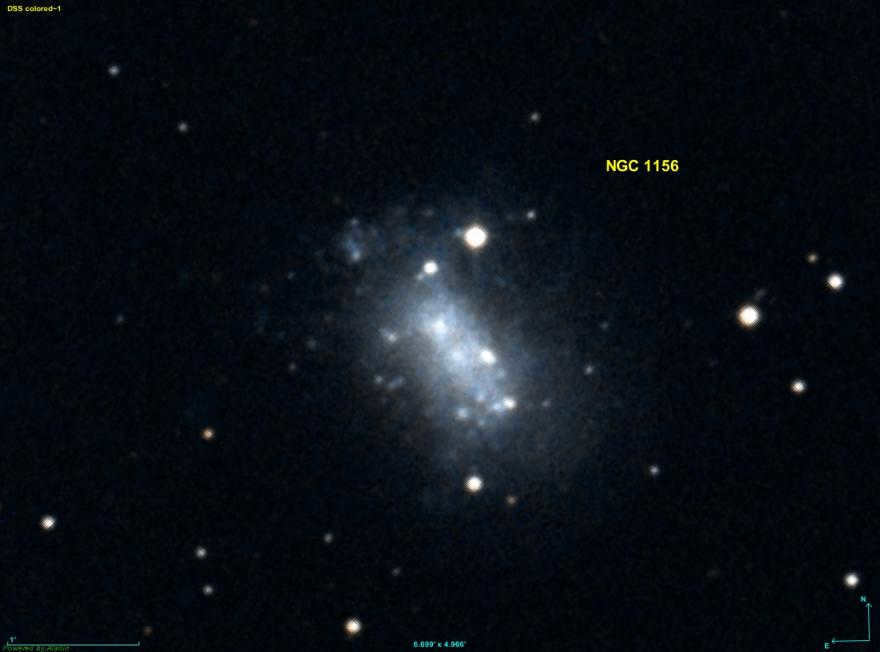
The constellation Aries can be found in the northern hemisphere of the sky. This particular area is quite popular as it lies along the solar ecliptic. Essentially, it is part of the zodiac, as it is situated on the visible path of the Sun throughout the entire year.
With its coverage of 441 square degrees of space, Aries ranks 39th among all stellar areas. However, it is only bordered by the constellations Whale, Taurus, Triangle, Perseus, and Pisces.
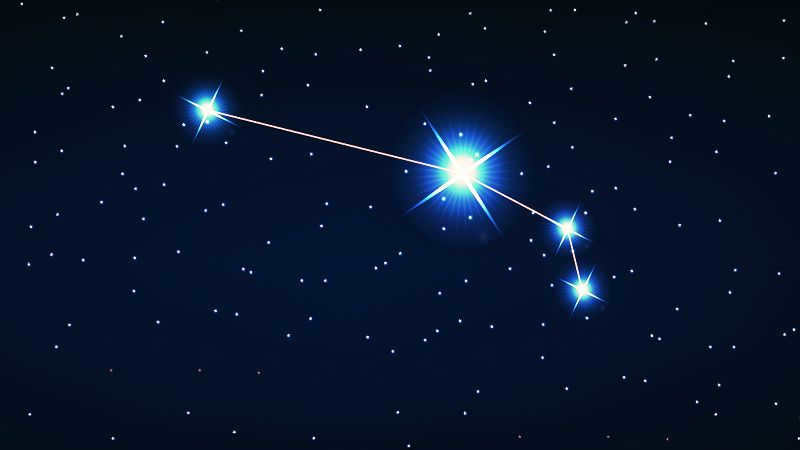
Indeed, the name Aries signifies a ram. It is the first constellation in the zodiacal lineup.
In actuality, it represents an ancient region of the night sky. Once upon a time, Ptolemy included it in his famous star catalog called Almagest. Additionally, it is a representation of the ram’s horns.
Above all, the myth of the golden fleece is closely connected with the constellation Aries. According to the legend, Nephela, the goddess of clouds, dispatched a winged ram with golden wool to rescue her offspring. This legendary creature transported them to Colchis, where Phrixus, the son of the goddess, offered it as a sacrifice to the gods. The ram’s skin was preserved in the temple, giving rise to the renowned golden fleece. However, the celestial form of the animal, in the shape of a constellation, endured eternally in the heavens.
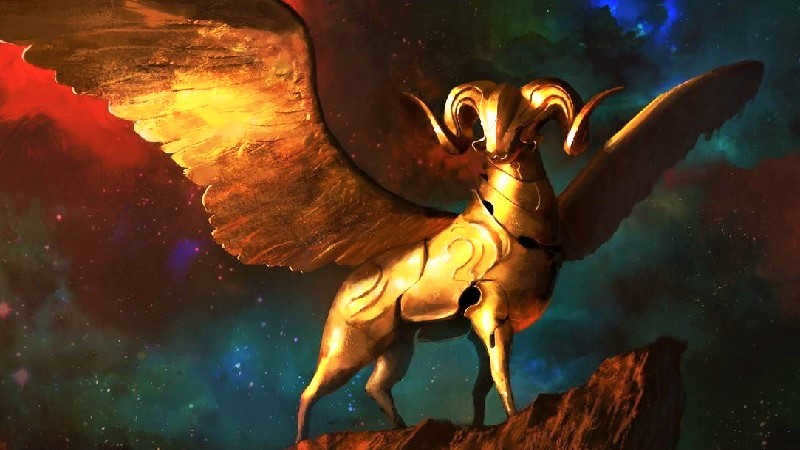
The constellational grouping of Aries consists of various stars
The most luminous one among them is undoubtedly Alpha, known as Hamal, representing the head of a ram. This giant star has a visible magnitude of 2.0.
In the second position, we have Beta or Sheratan. This star has a dual representation and appears as a subgiant with a white hue. Its visual magnitude is measured at 2.64.
Occupying the third spot is the white dwarf star known as 41 Aries. Its luminosity is calculated to be 3.63.
Lastly, we have Gamma or Mesartim, which signifies the initial star of the ram. This star is a binary luminary and has an average magnitude of 3.86.
Finally, we have Delta, also called Bothein, which is an orange giant star. It possesses a luminosity of 4.35.
Epsilon is a binary system comprised of main-sequence dwarfs. It has an average visibility value of 4.6.
Another binary system in the area is called Lambda. Its visual magnitude is 4.79.
Zeta is represented by a white dwarf with an apparent magnitude of 4.89.

What celestial objects are found in the constellation Aries
Interestingly enough, there are no Messier objects located in this well-known area, which, by the way, are also quite popular.
However, there are several spiral galaxies that can be observed here: NGC 697, NGC 972, and NGC 772. The last one is especially noteworthy for its lack of a junction, and two supernovae, SN 2003 hl and SN 2993 iq, have been discovered within it. Additionally, it contains a hidden satellite elliptical system, NGC 770.

Moreover, they discovered a dwarf galaxy that is not regular. It goes by the name NGC 1156. Furthermore, it is an irregular entity that falls into the category of the Magellanic type.
In addition, the constellation Aries is home to multiple meteor showers – the May Arietids, the Epsilon Arietids, and the Arietidae. Actually, the last one mentioned is the most intense.
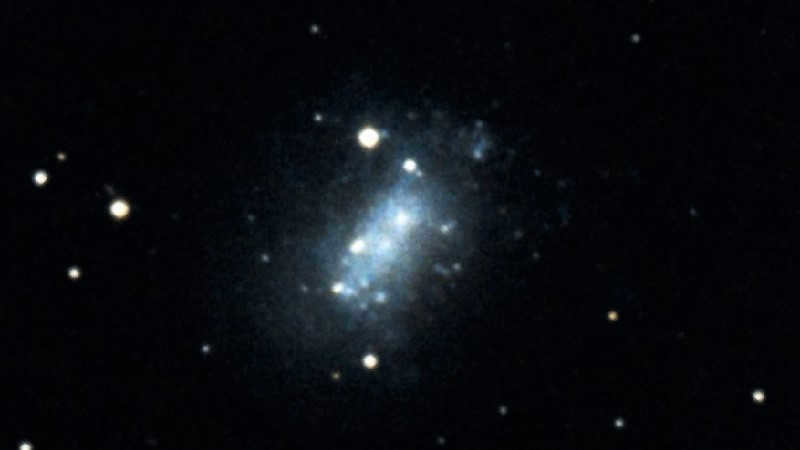
Observation
Residents of Russia have the unique opportunity to observe the Aries constellation, as it is visible at latitudes ranging from +90 to -59 degrees. The Sun can be seen in this region from April 19 to May 13. Astronomers classify Aries as a fall constellation, as it offers ideal conditions for observation during this time of year.

Despite the fact that Aries does not contain any stars brighter than second magnitude, it is still considered to be one of the most well-known zodiacal constellations. While the majority of stars in the constellation are faint, it is still possible to observe at least 50 stars with the naked eye under optimal conditions. Some of the main stars in Aries include Hamal, Sheratan, and Mezarthim, which are classified as second, third, and fourth magnitude stars in the field of astronomy.
One of the most well-known constellations in the Zodiac
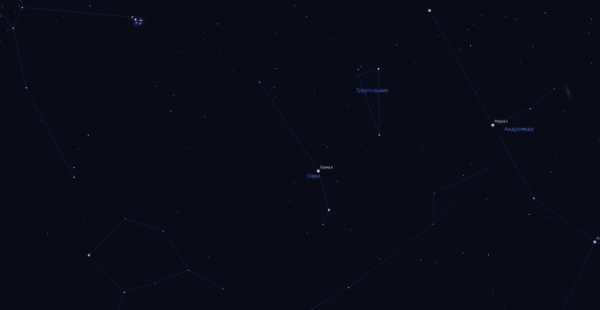
What is the method for locating this constellation in the night sky? “Geographically, it can be found situated between the constellations of Taurus and Pisces. It becomes even simpler to navigate if you direct your attention slightly southward from the Triangle constellation on the star chart.”

December’s Star Patterns
However, spotting this constellation can be challenging for those unfamiliar with it, as Aries doesn’t depict any specific shape. The primary stars, Hamal, Sheratan, and Mezarthim, simply form an arc, and the remaining faint stars are scattered so randomly that one can’t help but admire the ancient Greeks’ imagination. They saw in this chaotic scattering the image of a mythical ram, with the three main stars representing its long, curled horns. This was how the constellation was depicted on ancient star maps.
At what time can we witness the constellation? The optimal period to observe it is during the autumn season, specifically in the southern region of the sky. It is easily visible throughout Russia, particularly during the extended nights of November. Regarding the position of the Sun within this constellation, it is widely acknowledged that the Sun is currently located in Aries between April 19 and May 13.
The primary performers of the star arrangement
The star arrangement Aries encompasses a territory of 441.1 square degrees within the celestial dome. Merely three of these stars warrant particular consideration. Let us proceed through them sequentially, commencing with the most brilliant, the star Hamal.
Hamal
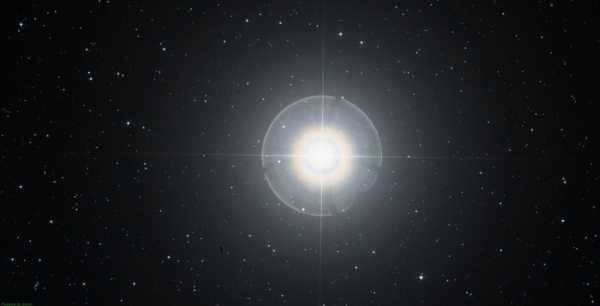
Hamal, which translates to “lamb’s head” or “mature lamb” in the Arabic language. It has a visible brightness of 2.00m and is classified as a K2 III star. Ptolemy himself acknowledged that this star was not originally part of the constellation’s outline, but he did make the following observation: “The star above the head”. As a result, in the constellation depiction, it is positioned “on the face” or “above the head” of Aries.
Sheratan
is a unique text that cannot be paraphrased.
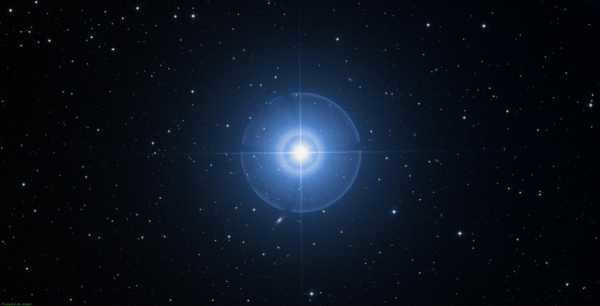
Sheratan is the second or northern horn of Aries, also known as the beta of Aries. In Arabic, Sheratan can be translated as “two marks” or “two signs”. This star, belonging to the spectral class A5V, is a main-sequence star. Sheratan is unique in that it is a double star, meaning it has a gravitational companion. The companion star has a rotation period of 107 days and is estimated to belong to a slightly different spectral class, G. Sheratan has an apparent stellar magnitude of 2.64m.
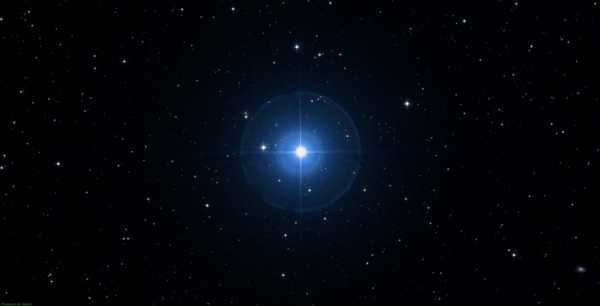
The star known as Mezarthim, also referred to as the gamma of Aries, is the third brightest star in its constellation. It is noteworthy because it was one of the first stars to have its duality observed using a telescope back in 1664, as discovered by Robert Hooke. Its apparent stellar magnitude is measured at 3.88m, and it belongs to the spectral class B9 V. Mezarthim is located approximately 204 light years away from Earth.
Interesting facts about the constellation
Interestingly enough, in ancient times, the position of the zodiac signs in the night sky aligned with the corresponding zodiacal constellations. This was because the vernal equinox point, where the celestial equator intersects with the ecliptic, was located within this particular constellation. From an astronomical perspective, this meant that when the Sun reached this point, the length of daylight hours was equal to the length of the night. However, over the course of the past 2000 years, the vernal equinox point has shifted to the neighboring Pisces. Despite this change, the symbol of the constellation, represented by its distinct horns, continues to be associated with both the constellation itself and the vernal equinox point.
Precession
The Earth’s axis experiences a phenomenon known as precession, which was discovered by Hipparchus of Rhodes in the second century BC. This phenomenon is caused by the gravitational influence of the moon and results in a shift in the direction of the Earth’s axis. As a result, all characteristic points have shifted, including the fall equinox now being located in the constellation Virgo, the winter solstice in Sagittarius, and summer in Taurus. This shift occurs at a rate of approximately 50 angular minutes per year, causing the vernal equinox to occur slightly earlier each year.
The Origin of the Constellation
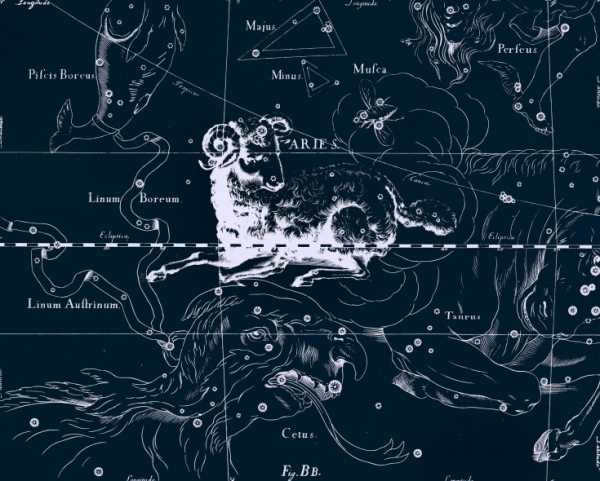
Drawing by Jan Hevelius from his atlas of constellations
When discussing the history of the constellation, it is necessary to mention the famous golden fleece. The Sumerian tribes referred to Aries as “the constellation of the ram,” the same ram that saved the mythological Phrixus and Galla from their wicked stepmother Ino. Using this ram as transportation, the siblings flew to Colchis, but tragically, Galla fell and drowned in the strait due to her fear of heights. Phrixus, however, successfully reached their destination and subsequently sacrificed the ram, presenting its fleece to Zeus. Another account suggests that the constellation is named after Aries, who guided the wandering god Bacchus through the desert. Aries not only placed the ram in the sky, but positioned it where the Sun’s path brings about the blooming of all nature.
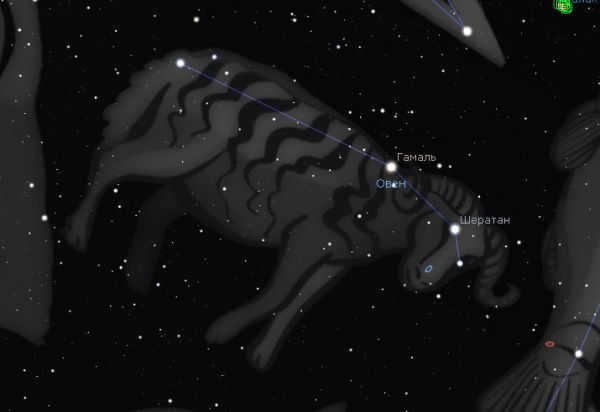
Constellations
Aries is one of the thirteen zodiacal constellations located on the ecliptic, which is the annual path of the Sun across the celestial sphere. The Sun is in Aries from mid-April to early May, and the optimal time to observe it in the night sky will be in six months, during the fall and winter months.
Etymology of the term
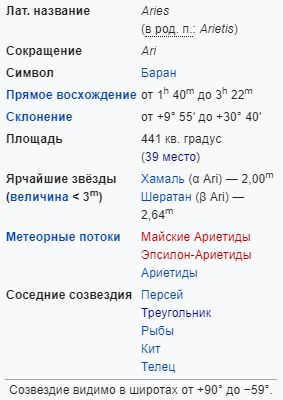
Characteristics of the constellation Aries
The constellation Aries has been historically linked to the ram by various cultures, such as the Sumerians and ancient Greeks. It is also associated with the myth of the Golden Fleece and the heroic ram Crius. This connection is reflected in its Latin name – Aries, which translates to “ram”.
Brightest star
There are multiple remarkable stars in the Aries constellation. The most luminous among them, known as the alpha star, is named Hamal. Its designation is derived from the term “ram’s head,” but in its current interpretation it signifies “lamb.” This yellow-orange giant is one of the most brilliant celestial bodies visible in the night sky during its period of observability. Scientists have made the remarkable discovery that it is encircled by a planet that is nearly twice the size of Jupiter, despite the fact that its orbit is not significantly larger than that of Earth.
Beta and Gamma
Sheratan is the name of the second brightest star. This double system is referred to as “two signs.” Planets do not orbit around the white star and its companion, which happens to belong to the same spectral class as the Sun.
Mesartim is the third notable star in Aries. The origin of this name is unknown, but it was commonly known as “the first star of Aries.” Interestingly, this star is part of a triple system consisting of a bright variable star and its dimmer companion. Another object orbits around this system. It was one of the first star systems discovered using a telescope in 1664 by Robert Hooke.
Aside from these stars, Bothein, the fourth brightest star, has a name.
How to locate the constellation in the night sky
When trying to locate Aries in the sky, the easiest way is to identify the arc formed by its three brightest stars, which are vertically aligned. If you look towards the zodiacal constellations, you will find the large constellation of Taurus to the east of Aries. On the other hand, to the west, you can spot Pisces, which is equally expansive and has a distinctive curved shape resembling a “double” with a loop at the end. Aries is comparatively smaller in size compared to its zodiacal neighbors, which explains why the Sun passes it in less than a month, while it takes 37 and 38 days for the Sun to pass through its neighboring constellations. Additionally, when searching for Aries, you can also identify the Triangle, which is located just north of it and has a similar size.
For the casual observer, this group of stars may appear like a basic horn-shaped hook created by the three most brilliant stars and lacking a definitive form, making it challenging for novice stargazers to locate it in the fall sky. However, if you are determined to observe it, the best time to do so in Russia is in November. During this month, the Aries constellation is most visible. Of course, to catch a glimpse of this less prominent constellation, it is necessary to be in a location far from excessive light pollution, such as major cities.
Other celestial bodies in the Aries constellation
First and foremost, it is important to note that constellations are specific areas of the night sky as observed from Earth. This means that the objects within a constellation can be located at significant distances from one another. Surprisingly, two of the faintest stars in Aries, TZ Aries and Teagarden, are actually some of the closest to Earth. TZ Aries is situated approximately 14.5 light-years away, while Teagarden is at a distance of 12.5 light-years.
Within the Aries system, there are a total of seven double stars, excluding Sheratan, as well as two triple stars that do not include Mesartim. Additionally, one of the stars in Aries has a protoplanetary disk revolving around it, while the other hosts an exoplanet slightly larger than Jupiter. It is interesting to note that this star bears striking resemblance to our own Sun in terms of its characteristics.
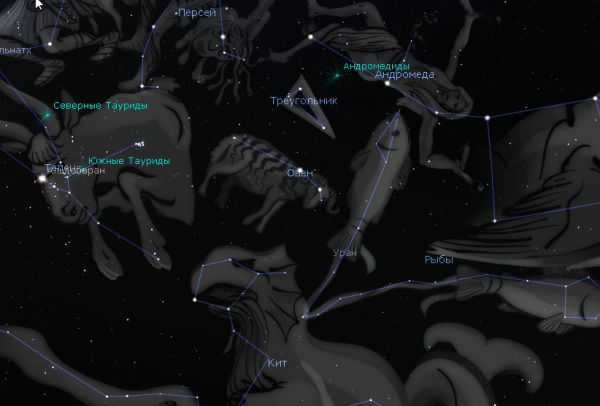
Aries
All of these stars do not come together to form a specific shape, and in the sky, they are either barely visible to the human eye or completely invisible.
Meteor showers in the constellation of Aries
In the region of the sky that belongs to the constellation of Aries, it is sometimes possible to observe meteor showers. The most intense one, called Arietids, can be seen from the end of May until early July. This name is also derived from the Latin word Aries. Unfortunately, during this time, the sunlight makes it impossible to see the constellation with the naked eye, which is why the daytime Arietids are referred to as radio showers – they can be observed using telescopes that operate in the radio frequency range.
Fascinating remote entities within the Aries constellation
In the constellation Aries, there are additional celestial bodies that elude visual detection through the naked eye, binoculars, or even amateur telescopes. However, these intriguing entities can be meticulously examined using specialized apparatus such as colossal telescopes, observatories, and space telescopes.
In the direction of Aries, about 130 million light-years away from Earth, lies a spiral galaxy known as NGC 772. Unlike our own Milky Way, this galaxy is almost twice as large and lacks a central junction. Additionally, NGC 772 boasts a unique curved shape.
Within the Aries constellation, there is another smaller galaxy called NGC 1156. This dwarf galaxy lacks a definitive shape, but the presence of mass movements in its center suggests a possible interaction with another galaxy. The true cause of these movements, however, remains unknown.
Two more galaxies, numbered NGC 972 and NGC 697, can also be observed within the Aries constellation. NGC 972 is situated in the northern part of Aries, while NGC 697 is located near the star Sheratan.
There is a great fascination with zodiacal constellations, as individuals often seek to locate a depiction of their astrological sign in the night sky. However, this can be a challenging task, as some constellations are not as prominent and can be overshadowed by other celestial formations. A prime example of such a constellation is Aries, which will be the focus of our discussion.
High above the clouds
The constellation of Aries can be seen all across our vast country. The best time to observe it is from late summer to the end of winter. Aries is positioned high in the sky. It is recommended to utilize the more prominent celestial formations nearby as guides: Taurus and Gemini are situated directly behind it, while to the north, you can spot Perseus and Triangle.
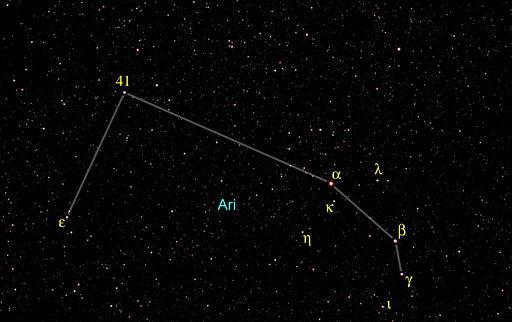
Due to the limited visibility of the stars in the Aries constellation, it is recommended to observe this Zodiac sign in clear weather and away from artificial light. In such conditions, around fifty stars can be seen with the naked eye.
Images of ancient maps provide only a rough depiction of the appearance of the Aries constellation in the night sky. It is quite challenging to envision a charming lamb with curved horns based on the arrangement of stars.
The primary and most identifiable feature of the celestial figure is a curved line formed by three stars. These stars are known as Gamal, Sheratan, and Mezartim – the brightest points in the constellation. They are also referred to as the alpha, beta, and gamma stars of Aries respectively. This curved line is easily visible in the sky, positioned to the south of the Triangle constellation.
Ancient
The scholars of yore dedicated their studies to the myriad constellations that adorn the Zodiac. Among these celestial patterns, Aries holds a place of great renown. Notably, this constellation finds mention in Ptolemy’s Almagest, a compendium of all the constellations known to the ancient world. In antiquity, Aries garnered particular significance as it marked the vernal equinox over two millennia ago.
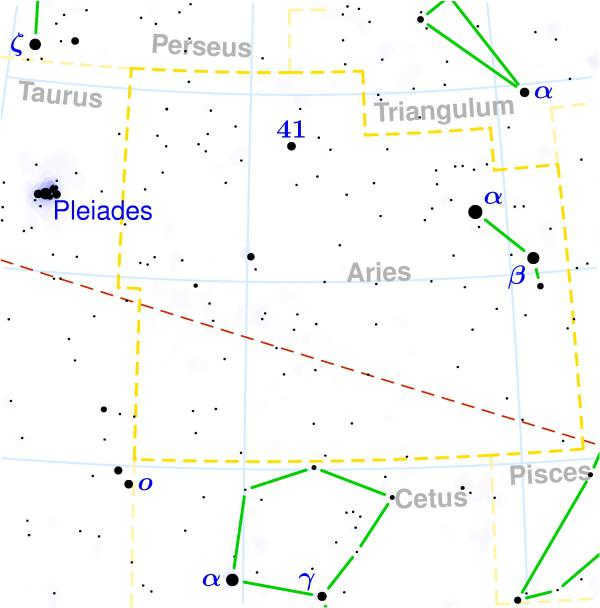

It is worth noting that the celestial arrangement has undergone significant changes since the inception of astrology. The Sun does not currently traverse the zodiacal constellations during the periods outlined in horoscopes. In the case of Aries, for instance, it “traverses” from April 19 to May 13. As a result, there is a noticeable discrepancy between astrological and astronomical perspectives on zodiacal constellations.
Mythical
When learning about the folklore of ancient Greece, children often encounter the legendary constellation Aries. According to the tales, this celestial formation represents a lamb adorned with a coat of golden fleece, which became the quest of the Argonauts. Another myth connected to Aries tells the story of a lamb with golden wool who rescues two children, Phrixus and Gella, from a cruel stepmother’s plot to sacrifice them to the gods. As a reward for its bravery, the lamb was immortalized in the night sky, among the twinkling stars.
When we go back to the Aries constellations, we cannot help but notice the prominent star called Gamal. Its name derives from Arabic, meaning “head of the ram”. Gamal is a second magnitude star that has caught the attention of researchers due to its potential planetary system. Recent findings indicate that there is at least one planet orbiting around Gamal. This planet has a mass that surpasses that of Jupiter by approximately 1.8 times, and it completes one orbit around its star in a period of 380 days.
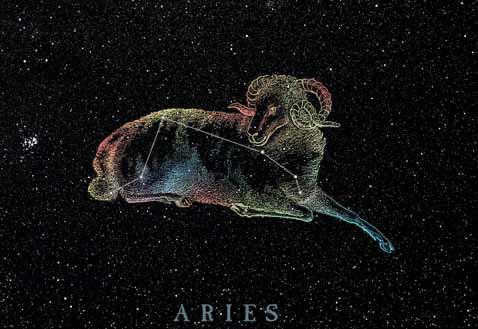
The following most brilliant among the stars that create the constellation of Aries is the beta of this heavenly design, or Sheratan. It stands for a dual system. Its primary element is a white star of the main sequence, positioned at a distance of 59.6 light-years from the Sun. Its companion revolves around it, completing one orbit in approximately 107 days. Presumably, the second star is a member of the G spectral class.
Gamma
Mesartim is a captivating star in the constellation of Aries. This triple star system, located 204 light-years away from the Sun, is a fascinating feature of the night sky. Despite its dim appearance with a third stellar magnitude, Mesartim holds significant historical importance. In ancient times, it was regarded as the first star of Aries due to its proximity to the point of the vernal equinox.
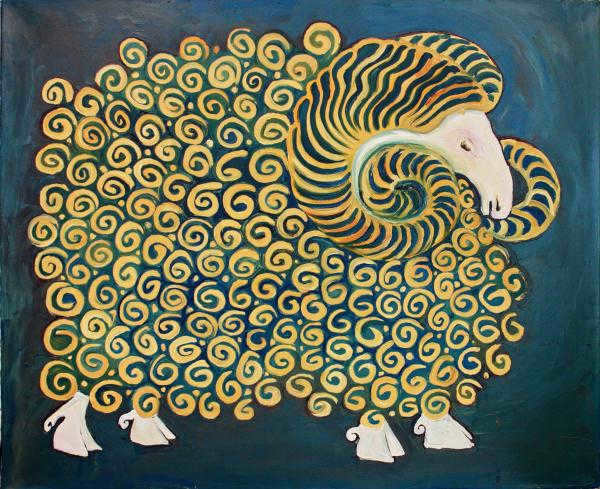
One of the components of the Aries constellation is a binary star system. These two stars can be observed separately using small telescopes, as they are sufficiently spaced apart. Both stars are white main-sequence stars and have a orbital period of over five thousand years.
The third star in the Aries constellation orbits around the binary star system and is less bright. It belongs to the K spectral class.
Mesartim, located in the Aries constellation, holds the distinction of being the first star to have its duality observed through a telescope. This groundbreaking discovery was made by the renowned scientist Robert Hooke in 1664.
The Aries constellation is often described in various sources as lacking interesting objects. However, there are noteworthy elements within its territory. One such element is BD +20°307, a double star located approximately 300 light-years away from the Sun. This system consists of two companion stars that are similar to our own sun but slightly more massive. Both stars orbit around a common center of mass, completing a rotation in a relatively short period of 3.42 days.
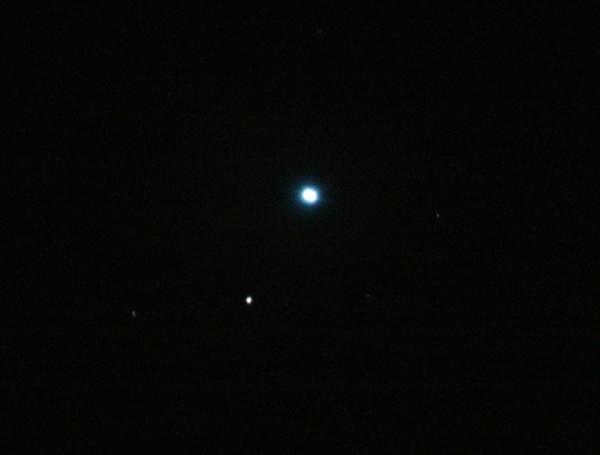
Nevertheless, this star has a unique feature. The two bright stars are surrounded by a dense cloud of dust made up of tiny, extremely hot particles. A similar structure can be found in our Solar System, but it is much less dense. Scientists believe that the dust in this cloud should have either fallen onto the stars or been blown away by the stellar wind a long time ago. The reasons for the unusually high density of particles in the cloud are still not fully understood. One theory suggests that thousands of years ago, two planets, similar in size to Earth or Venus, collided within this system.
TT Aries is a fascinating object that is known for its luminosity. It holds the title of being the brightest variable star in the sky, which has made it the subject of extensive study. Despite the wealth of data available on TT Aries, there is still much that scientists do not know about it. The exact mechanism behind the star’s outbursts remains a mystery, as its brightness has been observed to fluctuate in unpredictable ways. Recent research suggests that TT Aries can be classified as a new-like cataclysmic variable, but the question of the outburst mechanism is far from being resolved.

The constellation of Aries in the night sky may appear relatively faint when compared to some of its neighboring constellations, but it holds a wealth of fascinating stories and enigmas. These celestial paintings, crafted by the vastness of the Universe, serve as a gentle reminder that even the smallest and seemingly inconspicuous things can harbor something captivating and deserving of our close attention.
Aries is a constellation situated in the northern hemisphere. Its name, derived from Latin, means “ram,” which is depicted by its symbol of horns. This constellation is part of the zodiacal constellations, with Aries marking the beginning of the twelve signs of the zodiac.
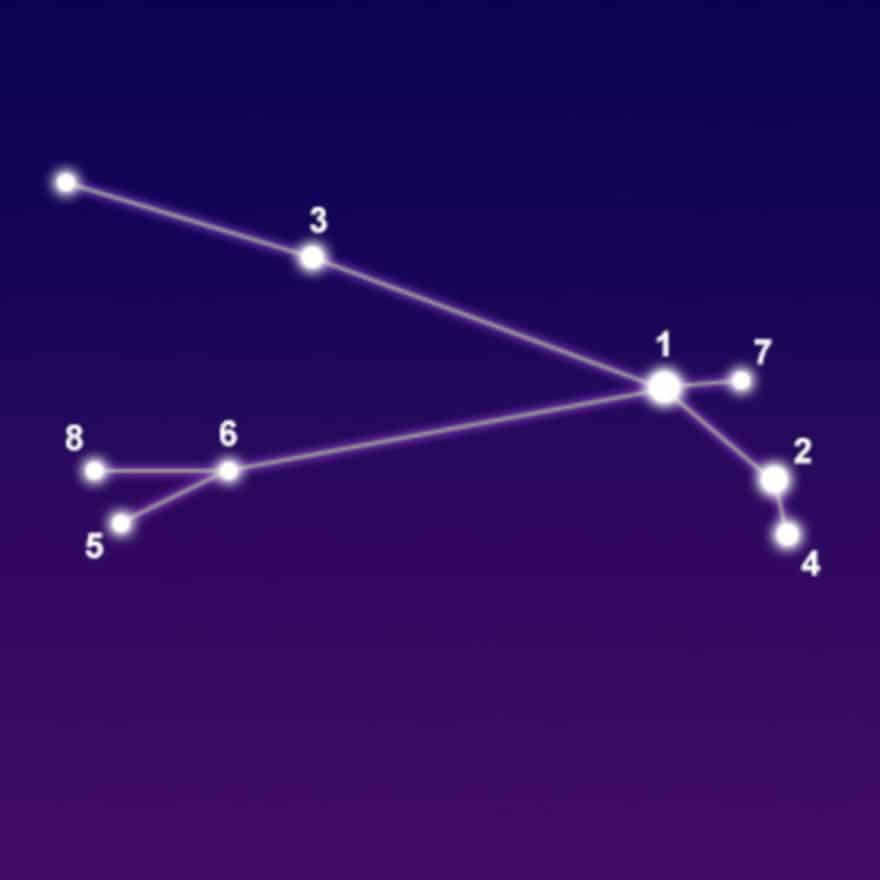
Interesting Information, Location, and Astrological Chart
Spanning across 441 square degrees, the constellation Aries ranks as the 39th largest celestial constellation. It can be found in the first quadrant of the northern hemisphere (NQ1). This constellation is visible in latitudes ranging from +90° to -60°. It shares its borders with neighboring constellations such as Taurus, Pisces, Triangle, Perseus, and Cetus.
Aries constellation is home to 5 stars with planets and does not contain any Messier objects. The most prominent star in this constellation is Hamal (Alpha Aries). Additionally, Aries features several meteor streams, including May Arietids, Autumn Arietids, Delta Arietids, Epsilon Arietids, Day Arietids, and Triangular Arietids. For a more detailed view of the Aries constellation, refer to the star map provided.

Legend
The people of Babylon saw Aries as a hardworking farmer, marking the end of the ecliptic. Later on, they changed its name to Ram, but the reason behind this decision remains a mystery. In the 7th century BC, the Neo-Babylonians reevaluated their beliefs about the zodiac and noticed the prominent star Hamal near the vernal equinox. This made Aries stand out among all the astrological signs.
During that time frame, it coincided with the equinox. The equinox is the specific moment when the Sun crosses the celestial equatorial line from north to south. However, due to the Earth’s axis wobble, this moment is now situated in Pisces. Nevertheless, in 130 BC it was located to the south of Gamma Aries, making Aries the initial point in the zodiac.
In ancient Greece, Aries was symbolized by the tale of the golden ram that saved Phrixus and transported him to Colchis, where he offered the ram to the gods. The ram’s skin was left in the temple, which then transformed into the Golden Fleece and became the central theme of the Argonauts’ story.
Phrixus, the offspring of the king of Boeotia, resided alongside his twin sister Gella and their malevolent stepmother In. In devised a cunning scheme, offering a bribe to an oracle who conveyed to the king that unless he sacrificed his children to the gods, the growth of wheat would be hindered, leading to the starvation of all inhabitants.
The children were on the brink of perishing when a winged ram with resplendent wool descended, sent by their birth mother, the nymph Nephela. While in flight, Gella tragically fell from the ram and drowned in the Dardanelles. Consequently, the strait was later named the Hellespont, also known as the sea of light.
Phrixus presented the king of Colchis with a golden fleece, in return for which he was bestowed with the king’s daughter Halkiope as his wife.
Prominent Celestial Bodies
Discover the prominent celestial bodies that make up the constellation Aries in the northern hemisphere. Gain insight into their characteristics and unique qualities.
Alpha Aries, also known as Hamal, shines the brightest within the constellation and ranks as the 48th brightest star in the night sky. This star is classified as a K-type orange giant and is approximately twice the size of our sun. Its visual magnitude varies between 1.98 and 2.04.
Hamal is situated approximately 66 light-years away from Earth. Historically, between 2000-100 BC, this star marked the vernal equinox, signifying the onset of spring. The name “Hamal” derives from the Arabic phrase “rasa al-hamal,” which translates to “ram’s head,” symbolizing a lamb.
Beta Aries is a binary system located 59.6 light-years away. It is characterized by being a white main-sequence star and a spectroscopic binary. The star has a visual magnitude of 2.64. Its name, Beta Aries, originates from the Arabic phrase aš-šarāţān, meaning “two signs”, which symbolizes its association with the vernal equinox. Alongside Gamma Aries, Beta Aries commemorated the vernal equinox thousands of years ago. Additionally, the companion star of Beta Aries belongs to the class G.
There is currently no information available regarding the origin of the name. It is sometimes referred to as the First Star in Aries because, at one point, it was the closest visible star to the vernal equinox.
Delta Aries (Bothein) is an orange giant of the K-type, located 168 light-years away. It has an apparent magnitude of 4.35 and is 13 times larger in diameter than the Sun. The name is derived from the Arabic word “butain,” which means “belly.”
41 Aries belongs to the spectral class B8Vn and is located 160 light-years away. It has an apparent magnitude of 3.61. It is traditionally named Bharani in honor of the second lunar palace in Hindu astrology.
Epsilon of Aries is a double star located 293 light-years away. It consists of two A-type main-sequence white dwarfs separated by 1.5 arc seconds. The visible magnitudes of the individual stars are 5.2 and 5.5. The total magnitude of the double star is 4.63.
Celestial Bodies
NGC 772 (Arp 78) is a spiral galaxy situated 130 light-years away, devoid of any connection. Its visible magnitude measures 11.3. Situated to the southeast of Beta Aries, this galaxy has been the site of two supernovae discoveries, namely SN 2003 hl and SN 2993 iq. Additionally, NGC 772 also houses the satellite galaxy NGC 770, which appears to be an elliptical galaxy with a magnitude of 14.2.

NGC 1156 is a small irregular galaxy that has a visual magnitude of 12.3. It belongs to the category of irregular Magellanic type galaxies. Situated in the northwest direction of Delta Aries, it stands out with its unique characteristics.
